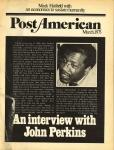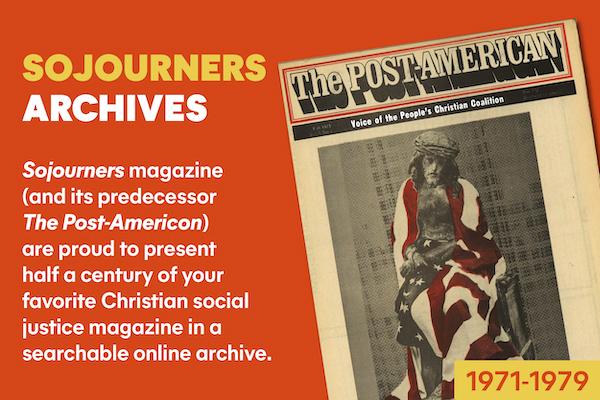Last month, the government again sought to use its food aid programs more for the political requirements of American foreign policy and the interests of agribusiness rather than to meet the needs of starving people. Last year, the government used nearly 70 percent of its food shipments for U.S. political objectives in Vietnam and Cambodia. Food For Peace, as the program is euphemistically called, thus becomes food for war and helps to perpetuate rather than overcome the causes of conflict around the world.
This year, the administration, led by Henry Kissinger, again tried to use Food For Peace to provide political support for its diplomatic favorites: South Vietnam (where there is a war being fought that is supposed to be over, so we fight it by proxy -- giving the Thieu dictatorship all the money and firepower needed to win for us); South Korea (where so many Christians have been put in jail for protesting the military regime); Egypt, Syria, and Jordan (because we do need their oil to maintain the GNP); Chile (you remember Chile, that’s where the CIA helped “destabilize” and overturn the Allende government to “prevent one party rule” so that a new military government of complete one party rule could take power -- the new party, of course, being far more sympathetic to American economic and military interests than was Allende’s party); and others.
Kissinger’s chief antagonist was Senator Mark Hatfield who argued that Food For Peace should be directed to those nations hardest hit by the world food crisis and not used as a financial support for political friends and supporters. Hatfield led a congressional fight aimed at cutting away the food aid funds used for political purposes and diverting them to their more proper purpose of relieving hunger. Congress succeeded in establishing a 30 percent limit on the proportion of food aid that could go for political purposes -- defined as being for any nation that is not on the United Nations “most seriously affected” list of 32 hungry nations (the U.S. political favorites mentioned above are not on that list).
After an unsuccessful attempt to have food aid to South Vietnam classified as “humanitarian” rather than as “political,” Thomas Enders, Kissinger’s assistant secretary for economic affairs, came to Hatfield with a deal. Since Hatfield had been in the center of the struggle to increase U.S. food aid this year to the hungry nations (PA, January issue), the Kissinger deal proposed that the administration would increase the amount of food aid given to the hungry nations (humanitarian aid) only if Hatfield would relax the 30 percent ceiling on political aid and give in to the administration's desires in granting a higher level of support to its client regimes and diplomatic friends.
Hatfield rejected the deal and held his position: "Food aid should be allocated on the basis of human needs rather than for political or economic interests." The result was the administration increased the overall allocation of food aid so that the proportion of that used for political aid could be higher and also found a legal loophole which enabled
them to violate the spirit of the congressional restrictions if not the letter in increasing the political aid sent. The political motivation of all this is clear, as is the willingness to use the world’s hungry poor as pawns in a bargaining process where the goals of American power dominate the discussion.
Jim Wallis is editor-in-chief of Sojourners.

Got something to say about what you're reading? We value your feedback!
